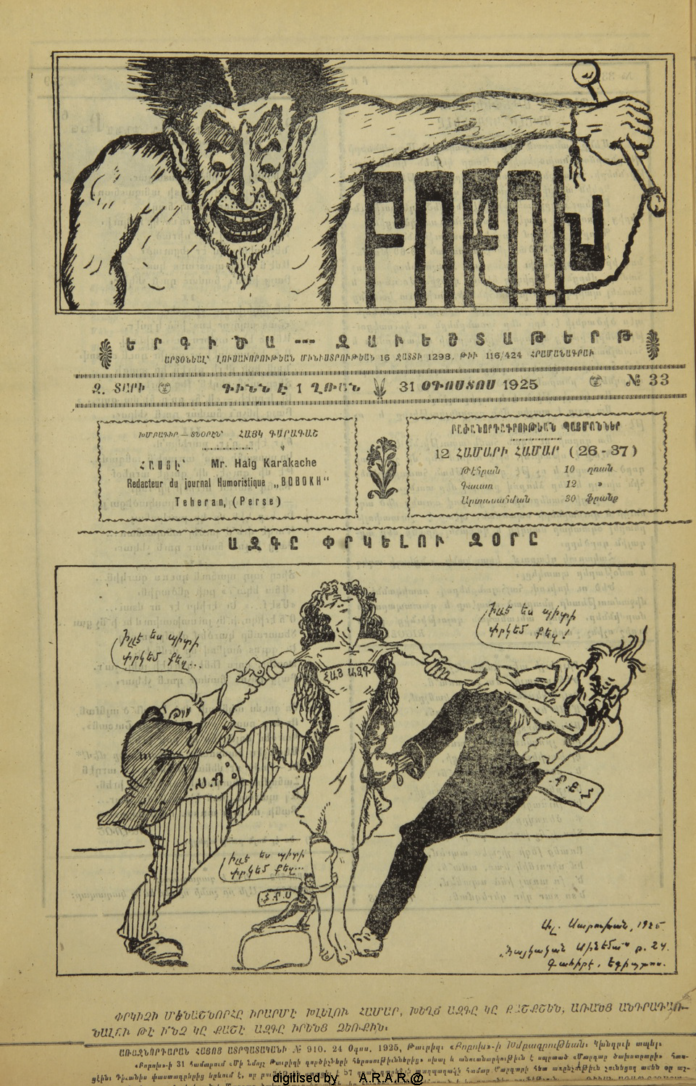The annual event will feature four experts in early 20th-century West Asia and include a discussion on the intersection of art history and the representation of marginalized communities in the press
By ANGIE CUMMINGS — arts@theaggie.org
UC Davis’ Department of Art History will be hosting its annual Templeton Colloquium, titled “Of Satire and Bigotry: Press Culture, Women’s Rights, and Liminal Modernity in West Asia,” on Friday, Feb. 25 at 4 p.m. The talk will be held in person at the Manetti Shrem Museum, and a livestream will be provided for those who cannot attend.
Made possible by the generous support of UC Davis alumnus Alan Templeton, this colloquium has been held since 2011 and brings together scholars from different institutions and fields of historical art research, providing the UC Davis community with a free and public lecture that tackles contemporary issues in art history.
The event is organized and moderated by a different faculty member each year, and this year, UC Davis Professor and Chair of the Department of Art History Talinn Grigor has assembled an interdisciplinary team of four experts on the first half of the 20th century in West Asia to discuss, “current issues of women’s rights, minorities’ rights and the intersection of art history,” Grigor said.
These complex issues will be examined through the lens of different forms of representation in the press, including satire and caricaturization, as well as the differences between newspapers or artists belonging to historically marginalized communities and mainstream outlets. Each of the speakers will cover one of these different angles within the overarching topic, giving voice to new conversations concerning these issues.
While this lecture is still based in the art-historical method of examining images and objects from a specific time and place of interest, these representations in the press are an entry point for an incredibly multi-faceted conversation that spans sociological, traditional, historical and cultural studies of West Asia. In order to gain something from this information-rich lecture, you only need to have some interest in the intersection of marginalized communities’ and women’s rights and representation in mass culture.
The first talk will be held by Yasemin Gencer, an art historian with a focus on the “visual culture and print media” from the late Ottoman to early Republican periods of Islamic art. In her talk titled “Modernity, Image, and Liminal Identities in the Early Turkish Republican Press,” Gencer will provide valuable insights on the state of underrepresented identities during the transitional period in which Turkey developed its own nationalism after the end of the Ottoman Empire.
Next, Houri Berberian, who co-authored an upcoming article with Professor Grigor on modernity and the representation of Armenian women in Iran, will discuss “Bogeymen and Birch Brooms: Pictorial Modernity, Satirical Newspapers, and the Armenian Women of Iran, 1920–58.” Berberian is a professor of history and the Chair and Director of the Armenian Studies Program at UC Irvine. She will specifically focus on “how communities mold the image of the modern woman in their own image,” Grigor said.
The third talk will be conducted by Camron Michael Amin, a professor of art history from the University of Michigan, Dearborn. Amin will discuss “Satire and Bigotry in Iranian Press Culture” and will explain a different side of the representation of marginalized communities in Iran, as his focus is on press written in Persian. Amin’s talk will provide insights on marginalized voices in the press in contrast to the depiction of these communities in the mainstream media.
Finally, Nadia von Maltzahn, an art historian whose research revolves around cultural and artistic practices in West Asia, will present “A Thoughtful Exaggeration: Lebanon’s Early Independent Period through the Eyes of Diran.” Currently working on projects about the development of a “professional field of art in Lebanon,” von Maltzahn will generate a discussion of the famous Armenian-born caricaturist, Diran Agemian, and will shed light on the conception of a national identity in Lebanon and marginalized voices during this process.
Written by: Angie Cummings — arts@theaggie.org





